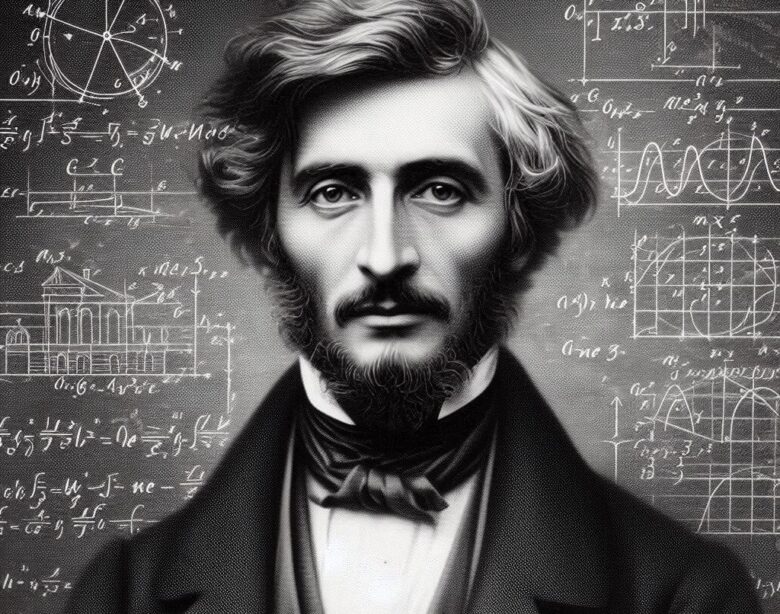The Contributions of Adrien-Marie Legendre
Adrien-Marie Legendre (1752-1833) was a French mathematician who made significant contributions to a wide range of mathematical fields, including number theory, geometry, algebra, and statistics. He was one of the most prominent figures in the mathematical community during the late 18th and early 19th centuries, and his work laid the groundwork for many important developments in modern mathematics. Legendre’s contributions are vast and include important results such as the Legendre symbol in number theory, the method of least squares in statistics, and advancements in the theory of elliptic functions.
Early Life and Education
Adrien-Marie Legendre was born in Paris on September 18, 1752. He came from a wealthy family, which allowed him to receive an excellent education. He studied at the prestigious Collège Mazarin in Paris, where he showed an early aptitude for mathematics and the sciences. After completing his studies, Legendre began teaching mathematics, and his work soon brought him to the attention of the leading mathematicians of his time.
One of the most influential aspects of Legendre’s career was his position as an examiner for the École Militaire, where he evaluated young military engineers. This position allowed him to maintain a deep connection with practical mathematics, as many of the problems he encountered involved the application of mathematical methods to real-world situations, such as ballistics and surveying.
Legendre’s early work was primarily focused on physics, particularly in the area of mechanics. However, he soon shifted his attention to pure mathematics, where he made his most enduring contributions.
Contributions to Number Theory
Legendre made significant contributions to number theory, a field of mathematics concerned with the properties and relationships of integers. His work in this area was instrumental in the development of modern number theory, and many of his results remain fundamental to the subject.
The Legendre Symbol
Legendre’s contributions to number theory, which bears his name, is the Legendre symbol, a function that encodes information about whether a given integer is a quadratic residue modulo a prime number. Specifically, the Legendre symbol (a/p) takes the value 1 if a is a quadratic residue modulo p, -1 if a is a non-residue, and 0 if a is divisible by p. This concept is closely related to quadratic reciprocity, a central theorem in number theory that Legendre attempted to prove.
Although Legendre’s first proof of the quadratic reciprocity law was flawed, his work laid the foundation for Carl Friedrich Gauss to later provide a correct and complete proof. Despite this, Legendre’s formulation of the Legendre symbol remains a standard tool in modern number theory, particularly in the study of quadratic fields and algebraic number theory.
The Legendre Conjecture
Legendre also formulated what is now known as the Legendre Conjecture, an unproven hypothesis in number theory. The conjecture states that there is always at least one prime number between any two consecutive perfect squares. This seemingly simple statement has yet to be proven, but it has inspired a great deal of research in the distribution of prime numbers.
Although the conjecture remains unproven, it highlights Legendre’s deep interest in the distribution of primes and his lasting influence on one of the most active areas of mathematical research.
Contributions to Geometry
In addition to his work in number theory, Legendre made important contributions to geometry, particularly in the study of polyhedra and spherical geometry.
Legendre’s Work on Polyhedra
Legendre’s work on polyhedra built upon the ideas of Euclid and was crucial in refining and extending classical geometric concepts. He is best known for his proof that the sum of the interior angles of any triangle on a flat surface equals 180 degrees, a result that appears simple but has profound implications for both Euclidean and non-Euclidean geometry.
Legendre’s study of polyhedra and his efforts to systematize geometric knowledge were instrumental in the development of modern geometry. His textbook Éléments de Géométrie became a standard reference for geometric instruction throughout Europe and remained influential for many years.
Spherical Geometry and the Legendre Differential Equation
Legendre’s contributions to spherical geometry are particularly noteworthy in the context of astronomy and geodesy (the study of the shape and size of the Earth). He developed a method for calculating the areas of spherical polygons, which are crucial for understanding celestial mechanics and the movements of planets and stars.
One of Legendre’s key achievements in spherical geometry was the formulation of the Legendre differential equation. This equation arises in the context of solving Laplace‘s equation in spherical coordinates and leads to the so-called Legendre polynomials, which are used in a wide variety of physical and engineering applications, including quantum mechanics, electromagnetism, and fluid dynamics.
Contributions to Statistics and the Method of Least Squares
Adrien-Marie Legendre is also remembered for his work in statistics, particularly his development of the method of least squares, a technique used to minimize the discrepancies between observed data and theoretical models. This method is now one of the most widely used tools in data analysis and statistical modeling.
The Method of Least Squares
Legendre introduced the method of least squares in 1805 as a way to solve the problem of fitting a curve to a set of data points. The basic idea is to find the curve that minimizes the sum of the squares of the differences between the observed values and the values predicted by the model. This technique is particularly useful in situations where measurements are subject to random errors, such as in astronomy, physics, and economics.
Although the method of least squares is now closely associated with the work of Carl Friedrich Gauss, who independently developed the technique around the same time, Legendre was the first to publish the method and provide a rigorous mathematical foundation for its use. The method has since become one of the most important tools in modern data analysis, and it is used in fields as diverse as machine learning, finance, and engineering.
Contributions to Elliptic Functions
In addition to his work in geometry and statistics, Legendre made significant contributions to the study of elliptic functions, a branch of mathematics that deals with the inverses of elliptic integrals. Elliptic functions are now central to many areas of mathematics, including algebraic geometry and number theory, but in Legendre’s time, they were still a relatively new area of research.
Legendre’s Work on Elliptic Integrals
Legendre’s research on elliptic integrals was motivated by problems in mechanics and physics, particularly those involving the motion of celestial bodies. He spent many years studying these integrals, classifying them into different types and developing methods for calculating them. His work laid the groundwork for later mathematicians, such as Niels Henrik Abel and Carl Gustav Jacobi, who further developed the theory of elliptic functions.
Legendre’s treatise on elliptic integrals, Traité des Fonctions Elliptiques, published in 1825, was a major milestone in the study of these functions. Although later mathematicians extended and refined his work, Legendre’s contributions to the field remain foundational.
Legacy and Influence
Adrien-Marie Legendre’s work has had a lasting impact on many areas of mathematics, and his ideas continue to be studied and applied in a wide range of fields. His contributions to number theory, geometry, statistics, and the theory of elliptic functions were crucial in shaping the development of modern mathematics.
Influence on Future Mathematicians
Legendre’s work influenced many of the greatest mathematicians of the 19th and 20th centuries, including Carl Friedrich Gauss, Niels Henrik Abel, and Carl Gustav Jacobi. His methods and results laid the groundwork for future research in number theory, algebra, and analysis, and his geometric insights helped to pave the way for the development of non-Euclidean geometry.
In addition to his direct contributions to mathematics, Legendre also played a key role in the dissemination of mathematical knowledge through his textbooks and treatises. His Éléments de Géométrie was widely used as a standard textbook for many years, and his works on elliptic functions and number theory were influential in shaping the direction of mathematical research.
Honors and Recognition
Despite his many contributions to mathematics, Legendre did not receive the same level of recognition during his lifetime as some of his contemporaries, such as Gauss or Lagrange. However, his legacy has grown over time, and his name is now associated with many important mathematical concepts, including the Legendre symbol, Legendre polynomials, and the Legendre differential equation.
Today, Legendre is remembered as one of the most important mathematicians of the late 18th and early 19th centuries, and his work continues to influence mathematical research and applications in a wide range of fields.
Please Visit Our Sponsors:
We only support vendors that we use ourselves in our home. The links below are our own links or affiliate links but know that we use all of these now, or have in the past. As the author/creator of this blog, I also tutor mathematics on Wyzant, sell on Etsy, create content on TpT, and learn Korean on Rosetta Stone.





